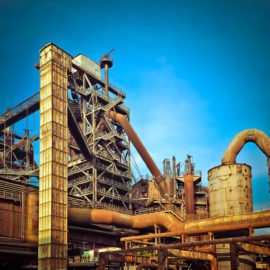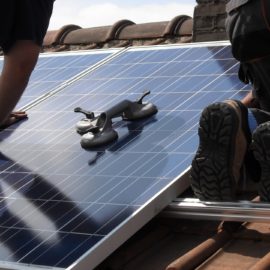
Can Denka learn? Or is it arrogance? They are watched closely and now they are back in hot water.
The controversial Denka Performance Elastomers neoprene manufacturing facility in LaPlace held wastes emitting high levels of the likely cancer-causing chloroprene in an open storage bin in an area where workers were not wearing protective masks, according to reports filed by the federal Environmental Protection Agency documenting two unannounced inspections of the plant in April and May. The reports were posted this week on an EPA website outlining the agency’s handling of Denka and other industry permitting issues in St. John the Baptist Parish. Those reports also revealed that Denka disposed of more than 4 million pounds of waste that EPA believes is contaminated with chloroprene in the River Birch sanitary landfill in Avondale between 2019 and 2021, possibly in violation of federal laws governing the disposal of hazardous wastes. “DPE remains in close dialogue with EPA, including with respect to the findings of the inspection reports,” said a statement released by Denka on Friday night. “Since purchasing the neoprene facility in 2015, DPE has operated with its primary focus on safety and reducing its environmental footprint,” the statement said. “The company has invested over $35 million in projects that have reduced its chloroprene emissions by 85 percent. Ambient air quality monitoring conducted by the company since 2016 has shown a similar reduction in concentrations measured at sites around the community.” Officials with River Birch were not immediately available for comment Friday night.
nola.com
The EPA is now doing unannounced check especially when the plant is in a majority minority area, those most impacted.
EPA Administrator Michael Regan announced in January that the agency would begin conducting unannounced inspections of industrial polluters and push states to better enforce anti-pollution laws, in a strategy aimed at curbing pollution’s unequal effects on vulnerable communities in Louisiana, Mississippi and Texas. The Denka inspections were aimed at determining whether the plant is following provisions of the federal Resource Conservation and Recovery Act, which governs the handling of hazardous wastes. During inspections between April 18 and April 21, EPA officials discovered that Denka has been using an “outside brine pit,” actually an in-ground tank, to hold partially-reacted neoprene, or neoprene popcorn, for stabilization or storage when it was removed from the plant’s “Poly-Kettle Strainer cleaning operation.” The material would eventually be transferred to a roll-off waste container box for disposal offsite. While Denka officials claimed the material is nonhazardous, the inspectors found that it met several of the characteristics of hazardous waste under federal law, including reactivity – the potential to explode or react violently when exposed to water or under normal handling conditions – and emitting toxic fumes, including chloroprene, at high levels.
Denka’s reading were high despite the “nonhazardous” claim.
During a May 5 inspection of the pit area, inspectors measured levels of chloroprene as high as 243,000 micrograms per cubic meter in the air as the waste was moved from the strainer equipment where it was being manufactured to the pit. Several other samples found levels of chloroprene between 64.1 mg/l and 193,000 mg/l in other locations around the pit and the waste container box. EPA has established a cancer risk level for chloroprene of 0.2 mg/l. According to a 2014 National Air Toxics Assessment by EPA, the individual lifetime cancer risk from chloroprene was at the rate of 2,000 cases per 1 million individuals at the census tract level near the Denka plant, the highest in the United States. Denka is the only manufacturer of chloroprene in the U.S. Denka’s chloroprene emissions have dropped dramatically since the company agreed to install new equipment in 2018, but levels have remained above the EPA recommendations at fenceline monitors around the plant, even during periods when the plant was shut down. The wastes stored in the pit might have been giving off emissions during that time.
Denka is under a voluntary compliance order by the LDEQ.
The company is operating under a 2017 voluntary compliance agreement with DEQ, but the agreement did not reduce its official emission limits that are set by the state. Denka has in the past asked EPA to reconsider its listing of chloroprene as a likely human carcinogen, based on a company-sponsored peer-reviewed study. A review of waste disposal records during the April inspection found that Denka was disposing of waste neoprene that may be contaminated with chloroprene at the River Birch Landfill in Avondale. “Waste shipment data showed that a total of over 4.2 million pounds of FIN-018 waste was sent off site as nonhazardous waste for disposal during the years 2019 through 2021,” the report said. But it said that neoprene waste may actually meet the hazardous waste characteristics, which would require it to only be disposed at a facility permitted to handle hazardous waste. The May 5 inspection report also pointed out that the facility’s own safety documents describe chloroprene as a toxic material with an acceptable exposure limit in air of only 0.2 parts per million, or 200 micrograms per liter, and requires employees to wear rubber gloves, coverall goggles and a full-face respirator when handling it in liquid form or when in the presence of chloroprene vapor. “During this inspection, the sampling team observed and documented multiple Denka personnel without any respiratory protection during the Poly-Kettle Strainer cleaning operation,” the report said. Based on the air samples taken during the inspection, the concentration of chloroprene within the building where the manufacturing process was occurring was greater than the company’s requirements, even before the strainer cleaning operation began.
Landfill operators should get technology to work for them and have quick checks of questionable material coming in.



